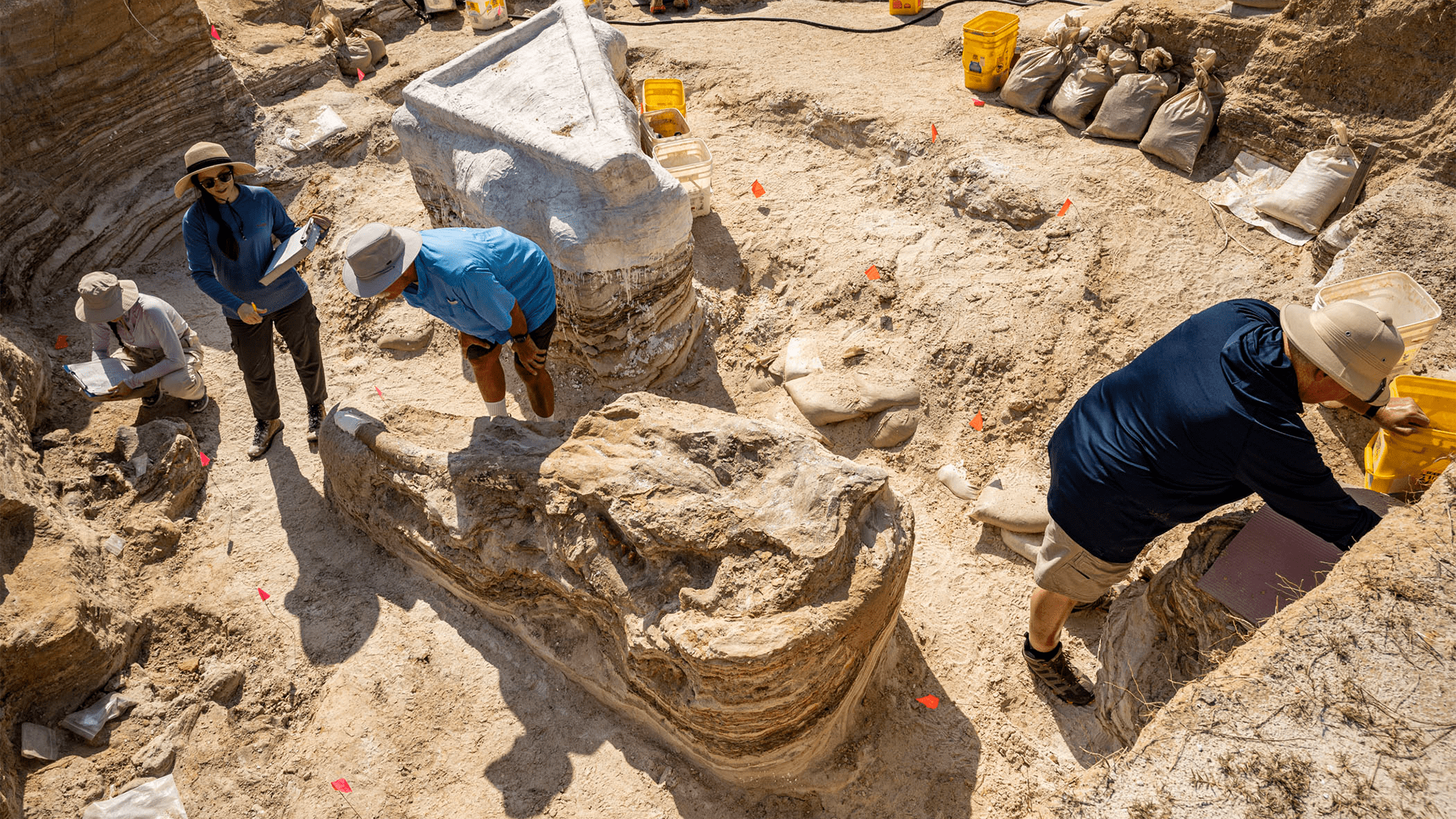

Today, elephants roam the savannas of Africa and rainforests in Asia, but elephant ancestors once lived in Europe and North America before going extinct like the region’s other ancient megafauna. Scientists and a team of volunteers recently uncovered a prehistoric elephant graveyard in northern Florida near Gainesville.
[Related: Elephants and humans share surprising similarities. A new docuseries dives deep into that relationship.]
Roughly five and a half million years ago, several extinct relatives of elephants called gomphotheres died in or near a now dried up river. Today, their fossils are giving scientists a unique view into prehistoric Florida.
“This is a once-in-a-lifetime find,” curator of vertebrate paleontology at the Florida Museum of Natural History Jonathan Bloch said in a statement. “It’s the most complete gomphothere skeleton from this time period in Florida and among the best in North America.”
Collectively, proboscideans include modern elephants and their extinct relatives. They were found on every continent before humans even arrived, and the gomphotheres like the ones found in Florida were among the most diverse.
Gomphotheres first evolved about 23 million years ago in the early Miocene period and dispersed into Asia and Europe. They likely crossed the Bering land bridge into North America 16 million years ago, and then crossed into South America via the newly risen Isthmus of Panama around 13 million years later. Rapid climate change and overhunting from humans led to the gomphotheres’ extinction around the end of the last ice age.

Teams of paleontologists and volunteers began digging at the Montbrook Fossil Dig in 2022. Portions of a gomphothere skeleton were uncovered early in the spring of 2022, and while isolated bones have been found at this site, paleontologists didn’t suspect any out of the ordinary finds until a volunteer found the fossilized foot of something very large.
“I started coming upon one after another of toe and ankle bones,” said retired chemistry teacher and volunteer fossil-hunter Dean Warner. “As I continued to dig, what turned out to be the ulna and radius started to be uncovered. We all knew that something special had been found.”
The team found several complete skeletons, including one adult and at least seven juveniles, within the next few days. The skeletons will need to be fully excavated before their size can be accurately determined, but Bloch estimates that the adult animal was about eight feet tall at its shoulders. The skull measures over nine feet long with tusks included.
The elephants were likely deposited or transported to the area over time. “Modern elephants travel in herds and can be very protective of their young, but I don’t think this was a situation in which they all died at once,” said Rachel Narducci, the collection manager of vertebrate paleontology at the Florida Museum. “It seems like members of one or multiple herds got stuck in this one spot at different times.”
[Related: Extinct ‘thunder beasts’ went from mini to massive in the blink of an evolutionary eye.]
These fossil beds are about 30 miles inland from the Gulf of Mexico, but this area was closer to the sea when these bones were deposited during the late Miocene. This period of Earth’s history was marked by higher temperatures and sea levels. Remnants of ancient land-dwelling camels, rhinoceroses, and llamas are encased next to fresh and saltwater fish, turtles, alligators, and burrowing shrimp. This long-gone Florida river cut through limestone, and fossils of older marine species like sharks are occasionally found in the ancient remnants of its bed.
The Montbrook gomphothere represents a new opportunity for scientists to learn about the long lost fauna of North America.
“The best part has been to share this process of discovery with so many volunteers from all over the state of Florida,” Bloch said. “Our goal is to assemble this gigantic skeleton and put it on display, taking its place alongside the iconic mammoth and mastodon already at the Florida Museum of Natural History.”
